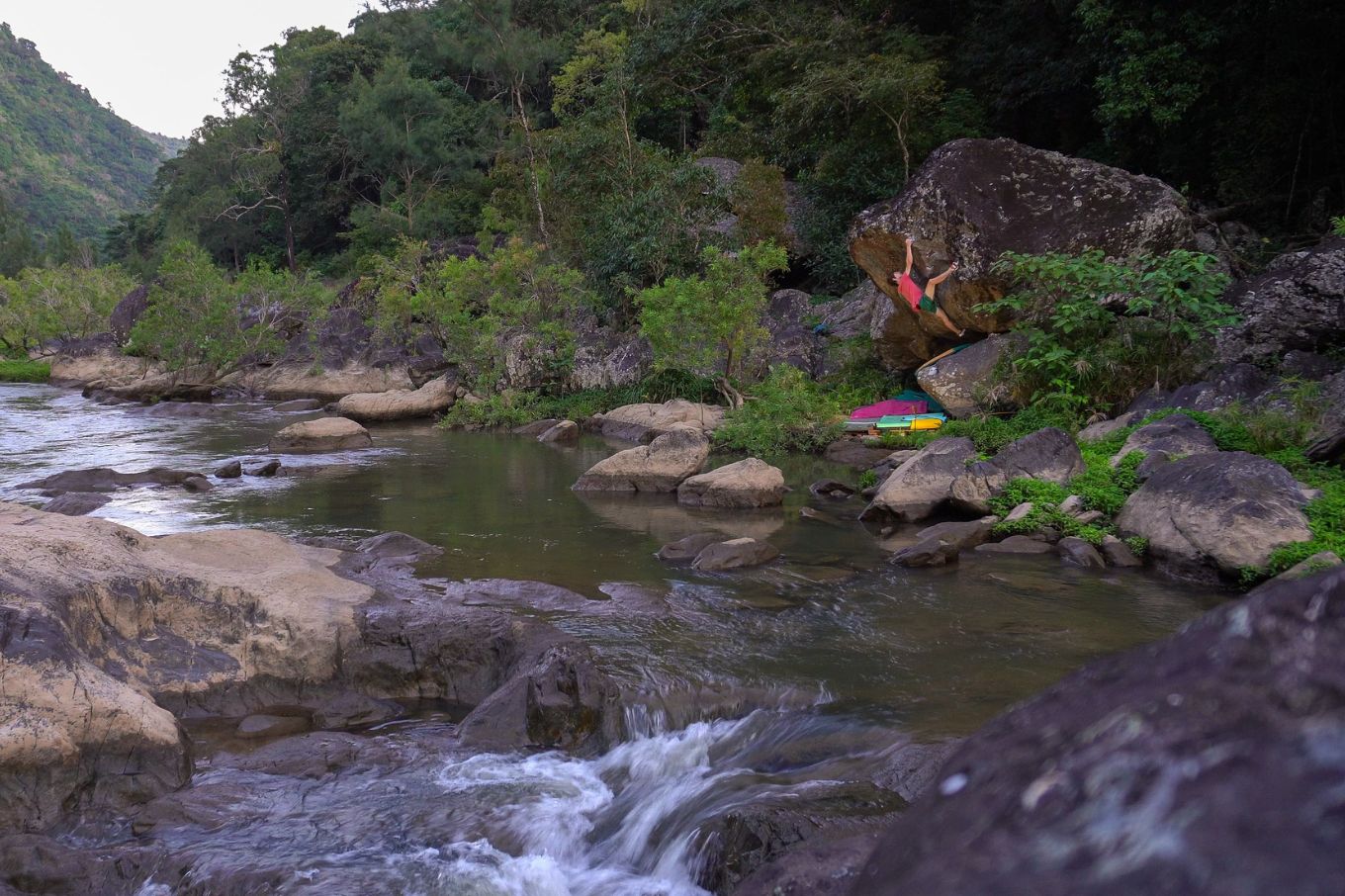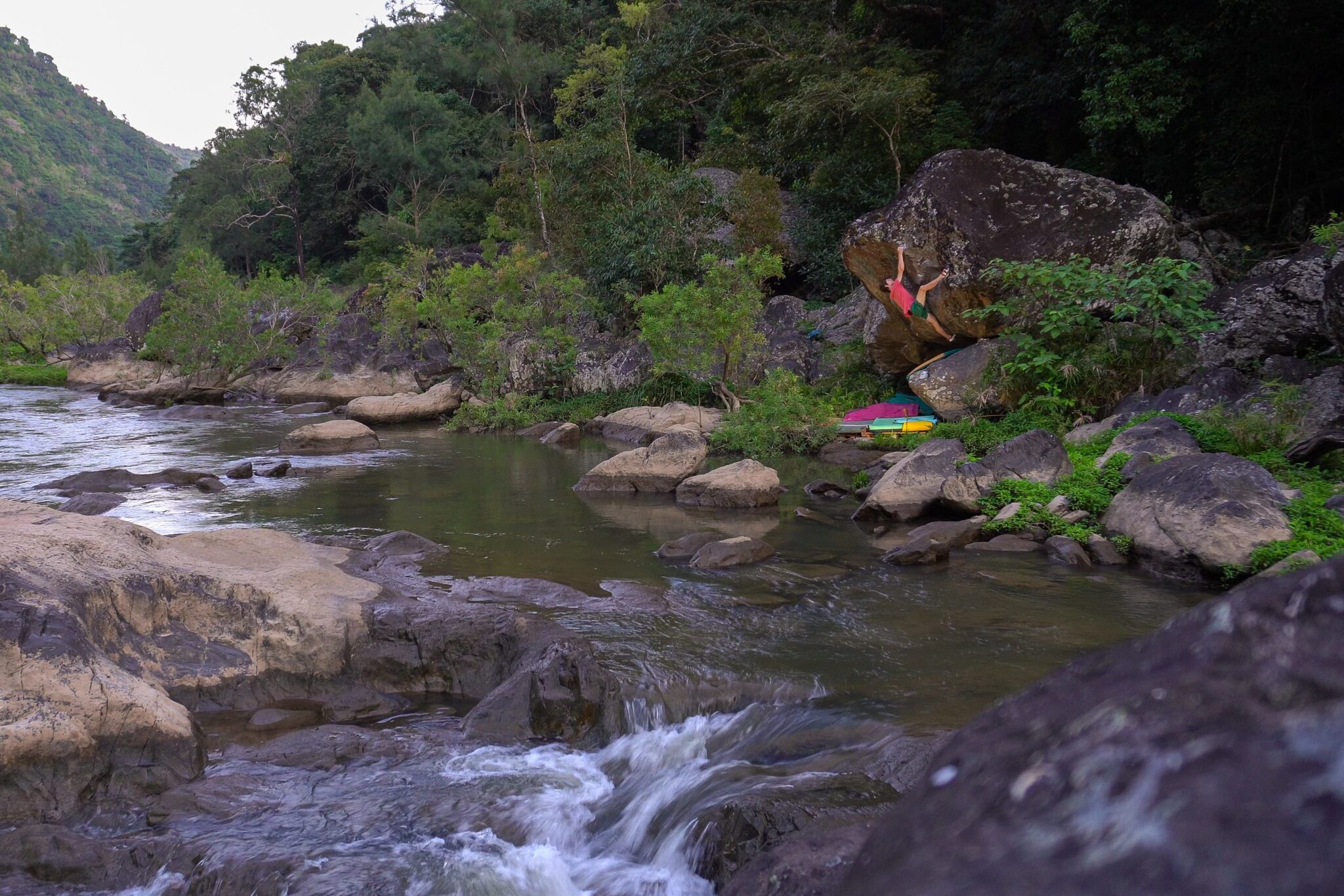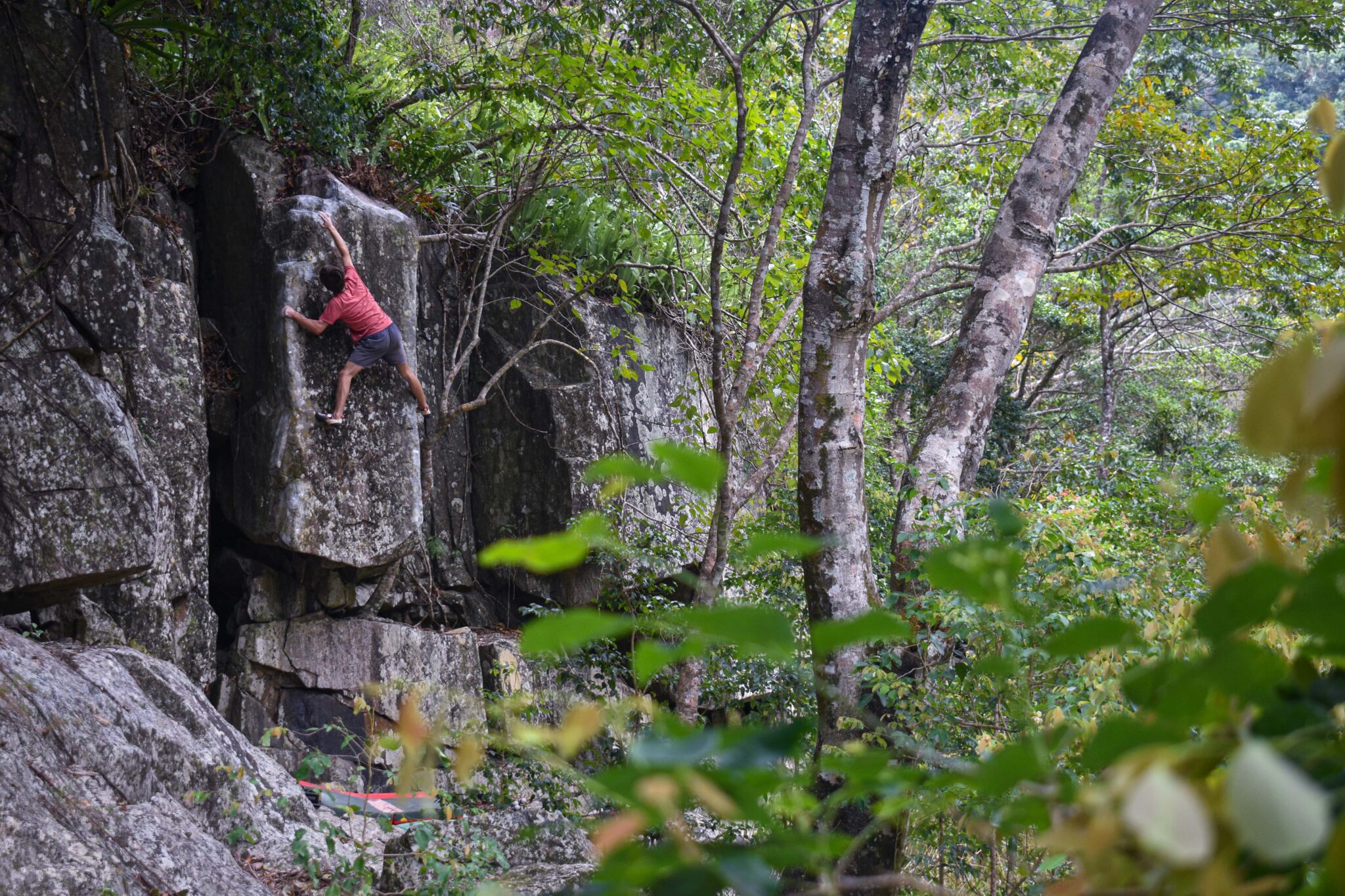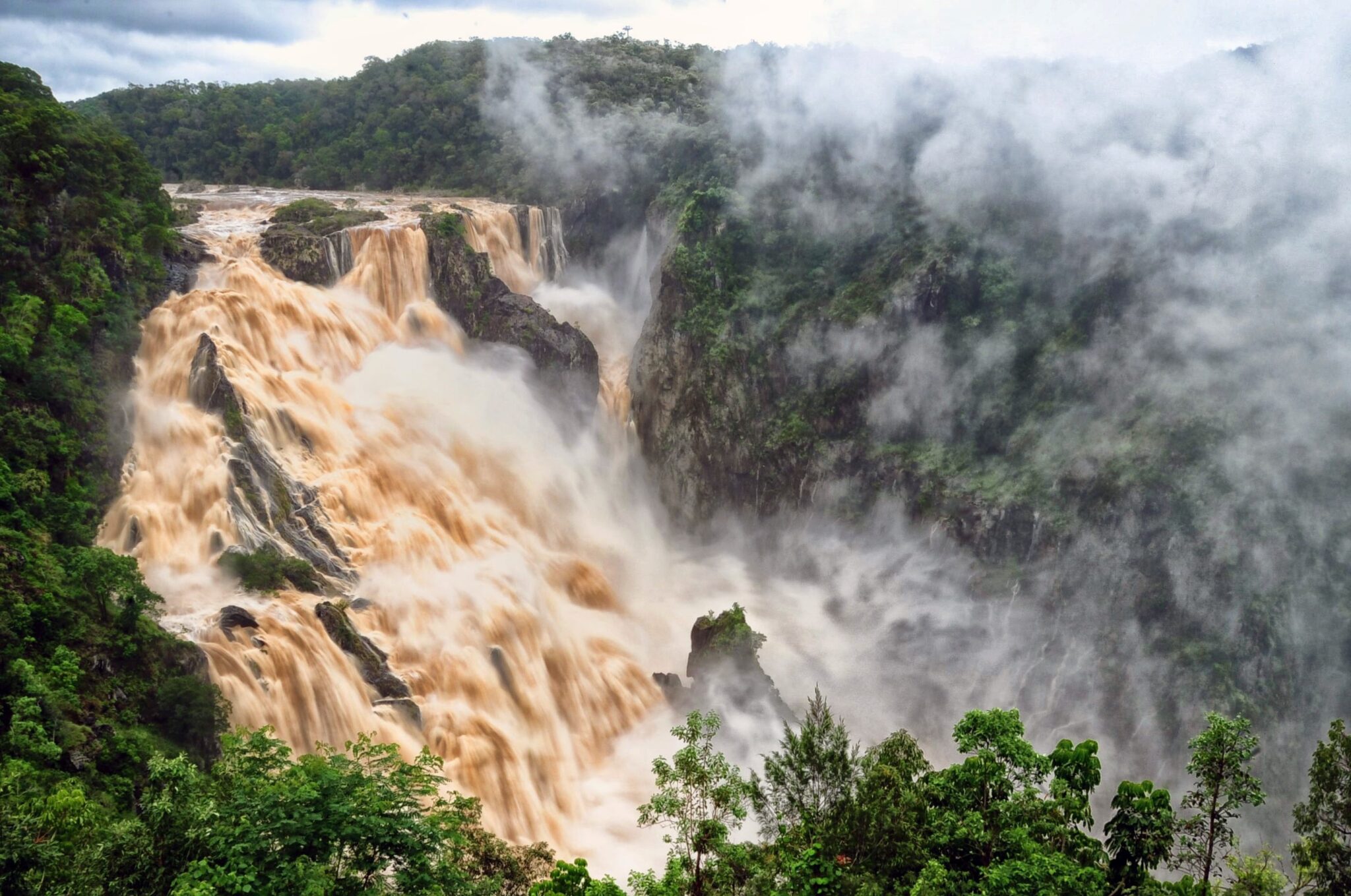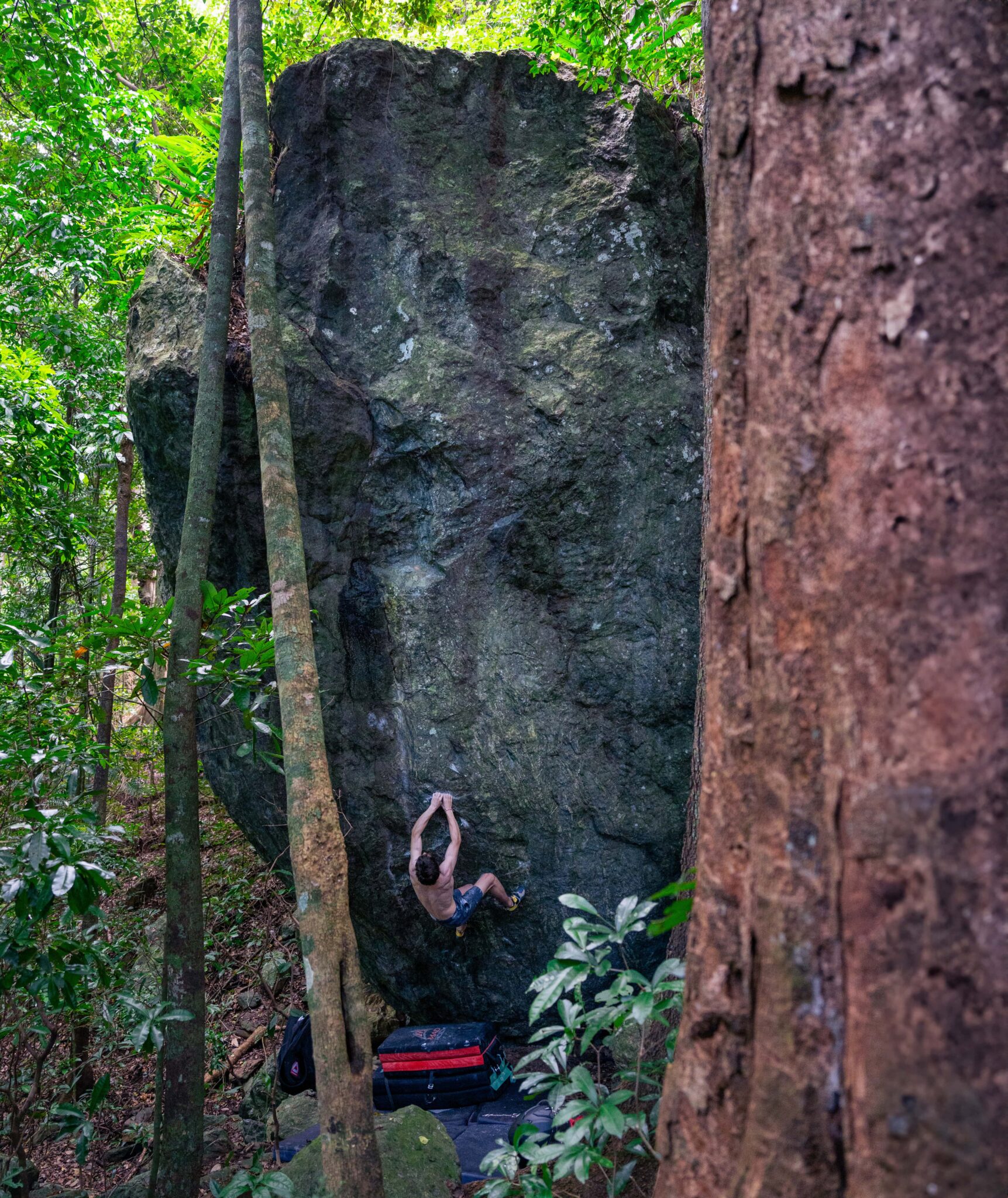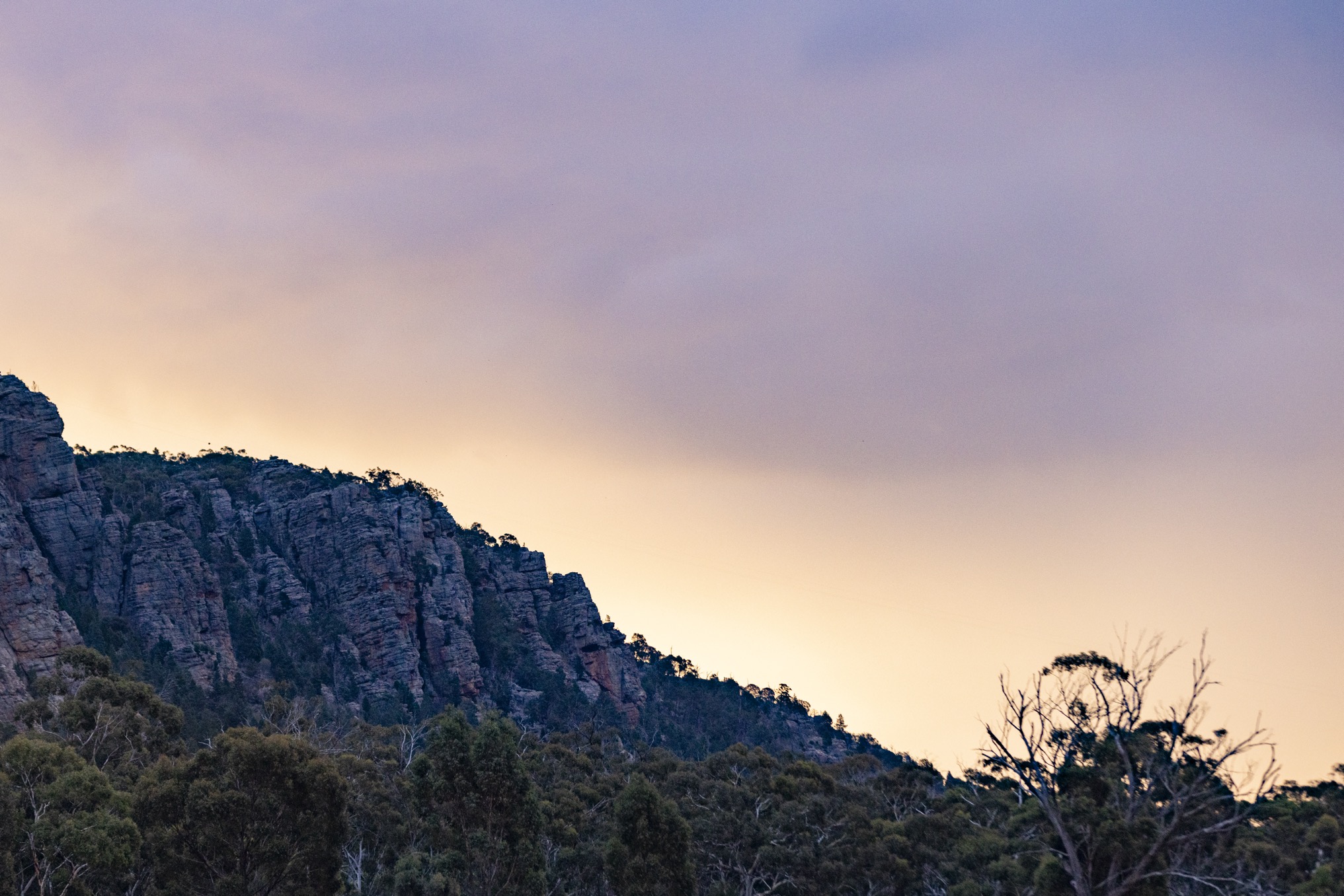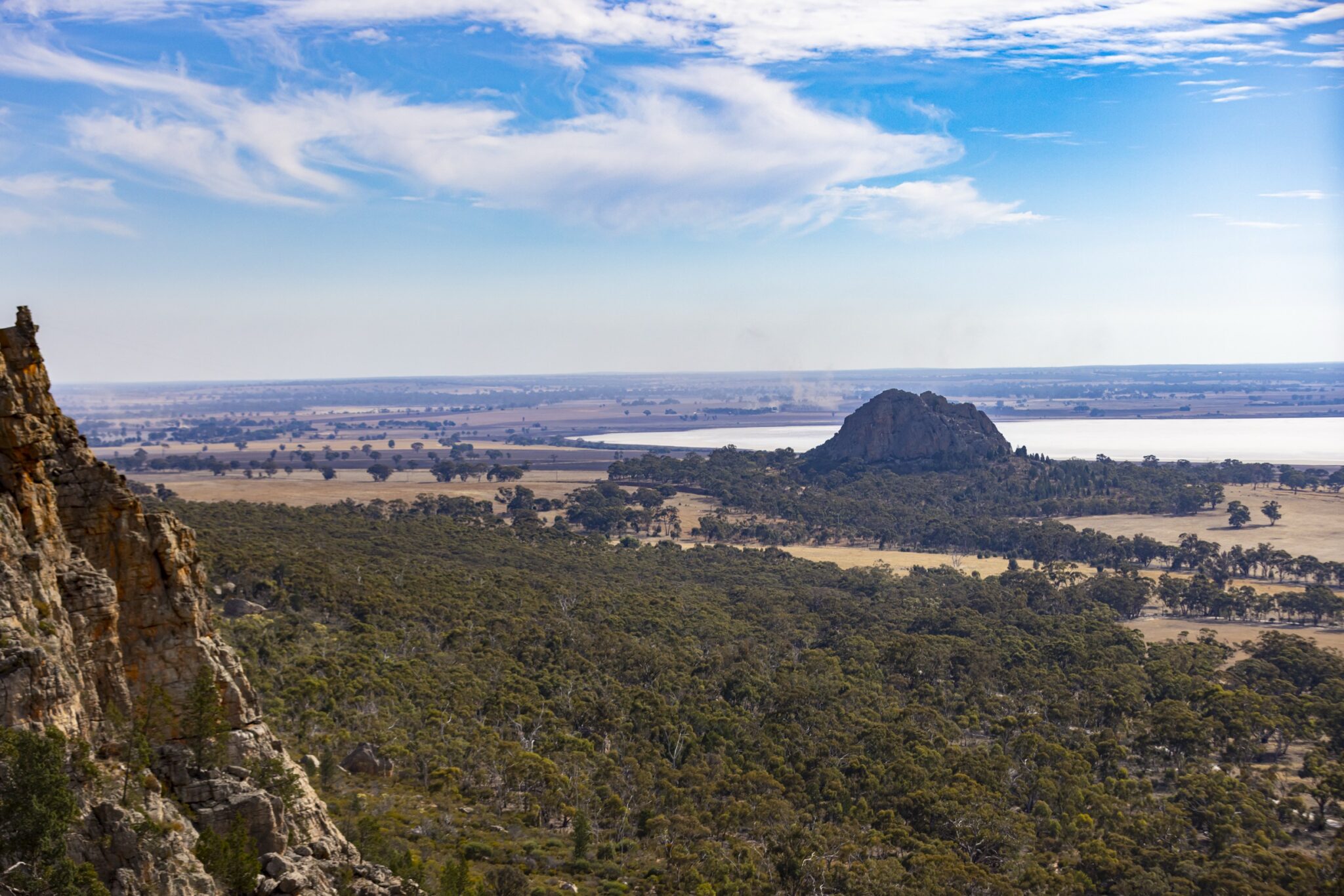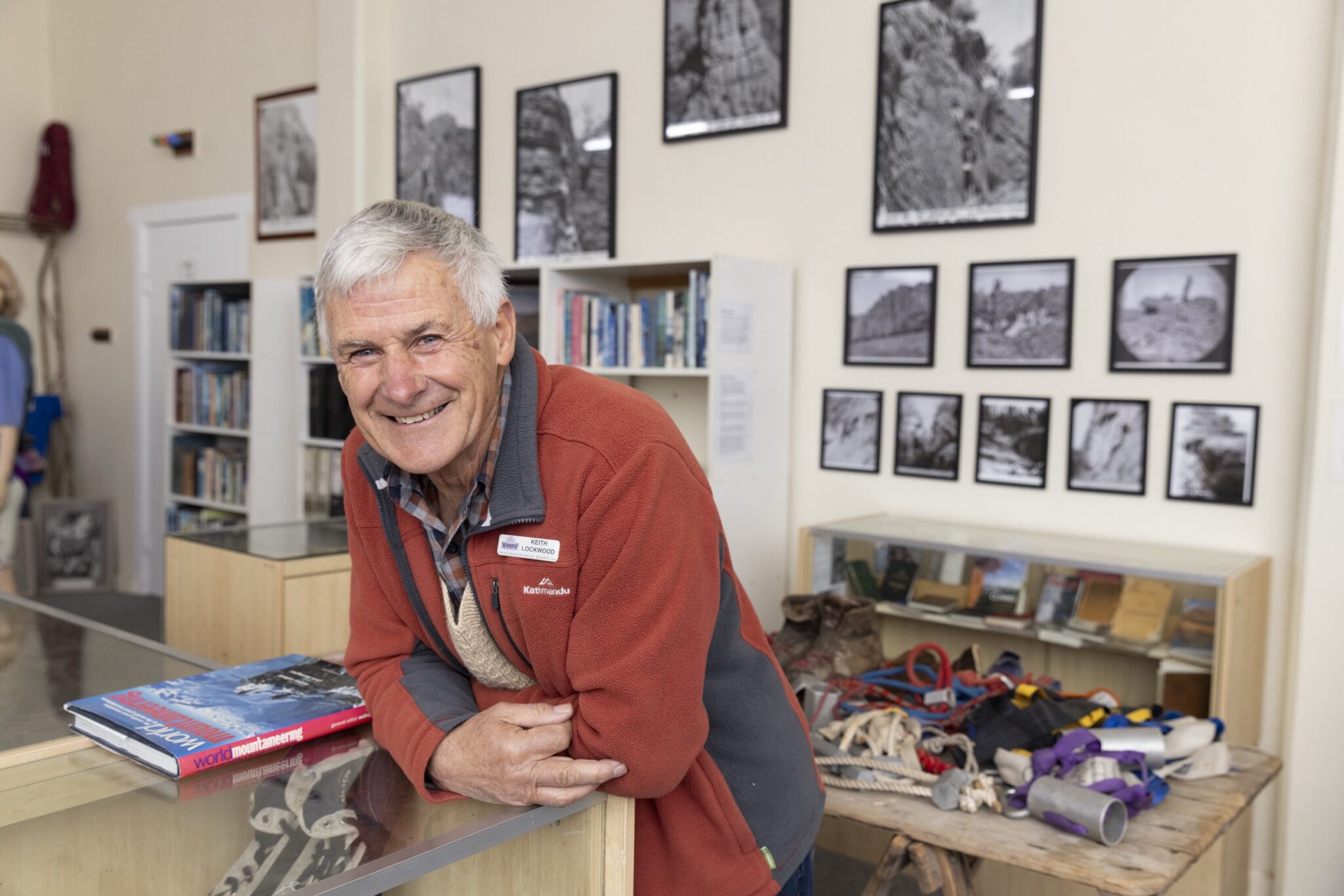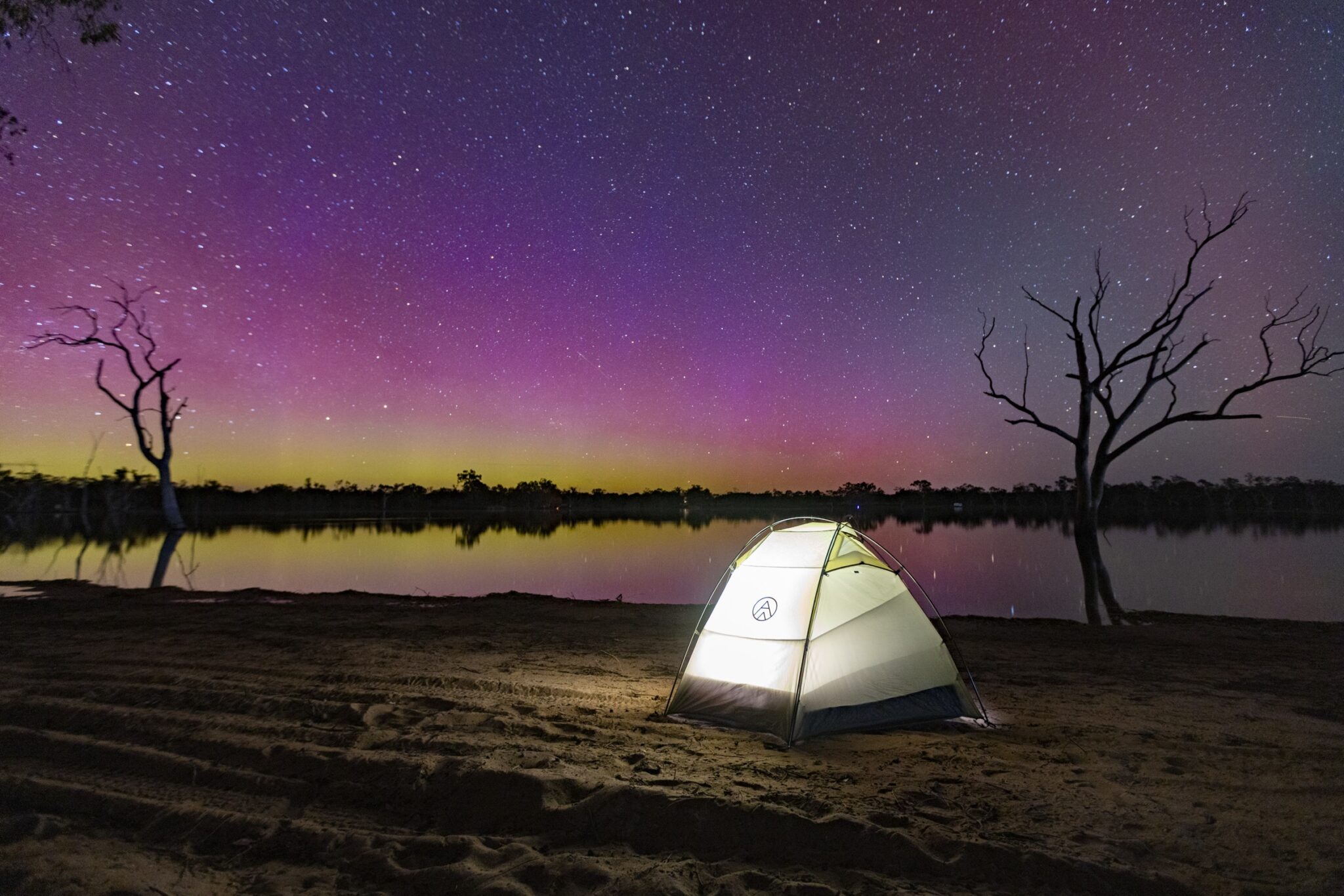Snorkelling on the reef, barbies on the beach, rainforest wanders and… bouldering? Climbing generally doesn’t come to mind when you think of Cairns. Sure, the Wet Tropics probably isn’t geographically perfect for hard bouldering, but if you’re looking for the adventure of a climbing holiday, it might be the place for you. Bouldering legend and Ambassador for The North Face, Callum Mather, takes us on a tour of some lesser known gems found near his home turf.
Far North Queensland hosts a pretty diverse range of rock types—generally some form of granite or metamorphosed mudstone, which vary in quality depending on the area. The highest grain lies on the Atherton Tablelands, but the freshwater creeks will make it worth your while. A day at Emerald or Davies Creek will treat you to a chilly swim, a waterfall circuit and some rock in your grubby mits. Next up on the rock quality scale would be the coastal blocks, where waves generally round out holds nicely for your scaling pleasure. Sunny Bay or Pretty Beach would be the mainland beachy keen picks, but if you’re up for an adventure then hop aboard the ferry to Fitzroy Island with a cheeky grin on your face and a crash pad on your back.
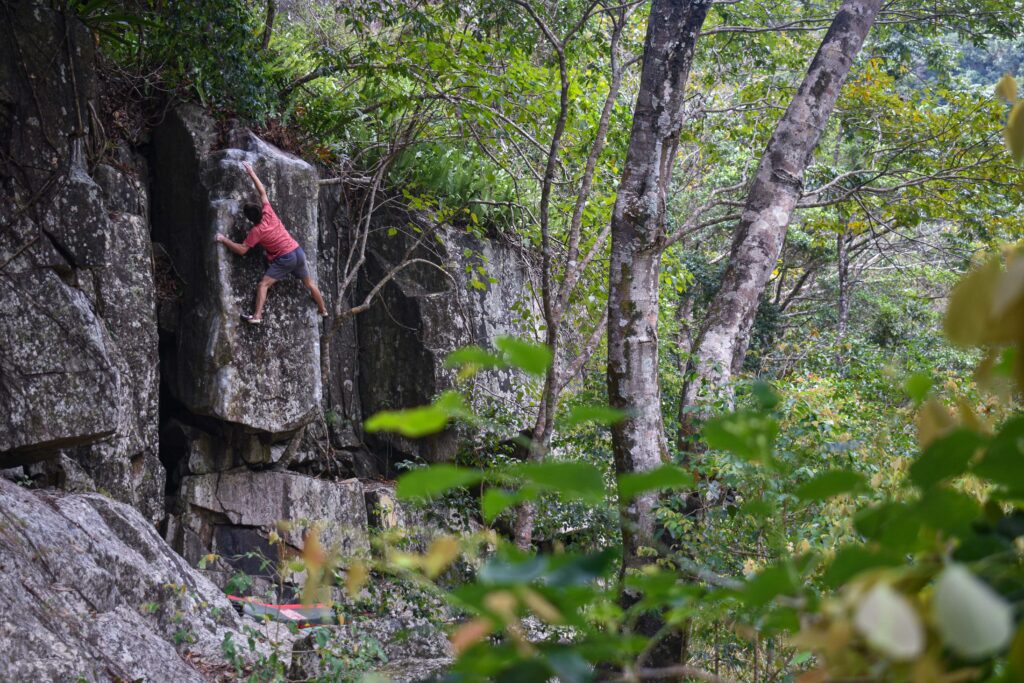
But the real gems of the Far North are found in Barron Gorge, just a few kilometres northwest of Cairns. Bias shmias, it’s the best rock north of Brisbane!
Let’s talk history. The Djabugandji Bama are the traditional owners of the area known as Djirri Nyundu Nyrrumba, which includes Barron Gorge National Park, part of the Wet Tropics World Heritage Area. In the Dreamtime, it is told that a carpet snake called Buda-Dji carved out the Barron River and the creeks that join onto it, all the way from the Tablelands to the coast. The local indigenous people have called the place home for many thousands of years.
In 1935, the water was harnessed in the Barron Gorge Hydroelectric Power Station to generate Queensland’s first hydroelectric power. Trad climbers began venturing up the Falls in the 80s, but eventually this was banned by the local council. Most of the early recorded sport routes and boulders were done by Steve Baskerville, Jason Shaw and Lee Skidmore in the early 90s. The scene sat relatively dormant for a while but was rekindled by Cameron Wycherley, Jared Tyerman and Kieran Pates in the 2010s, establishing many of the classics around the area and sparking a training culture that upped the local level. I moved back to Kuranda in 2020 and have since established many of the harder boulders in the region.
I quickly made my way through the classics, and looked to local projects for a harder challenge. I’ve always had a fascination with the mystique that often surrounds legendary longstanding projects. How hard is it, who’s tried it, and will it even go? At the time, the main two were The Cave Proj and Glen’s Line.
The Cave Proj climbs a thin seam up a corner feature, with little slots that leave your knuckles bruised and your cuticles bloodied. I heard about the project from Kieran, who reckoned he couldn’t fit his fingers in the slots. How steep is it, how tiny must the crimps be, and does it even go? I played around with a couple of different methods over a few sessions, and eventually brought Bodega (V9) to life. It was the first V9 north of Townsville, and the real start to my journey and love for boulder development.
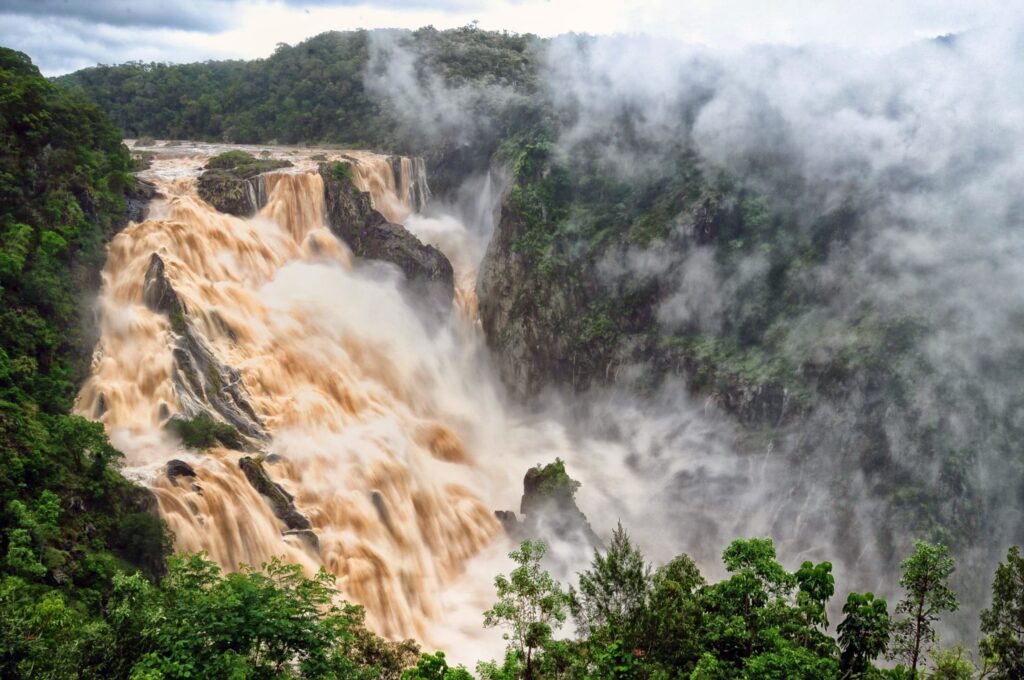
Glen’s Line is a project envisioned by Glen Hayford, a Townsville legend who established the high start, which he called Storm Chasers (V8). It generally became known as the Storm Chasers Low project. Its reputation as being the hardest project around grew the more Glen and I sieged the thing. It took me around 14 sessions over four years to establish the middle start, aptly named Storm Chasers Low (V12). The obvious lowest start point adds four hard moves into Storm Chasers Low, and will be a real power-endo test piece. I’ve been calling the full line The Eye of the Storm project. And yes, it goes!Two more recent projects that squeezed their way into local legend are The Floating World project and a massive highball face I’ve been calling the Buda-Dji project, an ode to the dreamtime serpent who kindly left this king line in its wake. I first stumbled across The Floating World project with Arlen Breeze on a boulder hunt in 2020. It looked impossible at the time, but it stayed in the back of my mind as a line that might one day seem a little less impossible.
I started trying it properly in 2022, but as the process went on, I started to wonder if it would go. I set my alarm for 2am for the best possible Far North connies and managed to scrape my way to the top. Standing on top of something I had built up in my head to be impossible felt pretty damn special. I named the climb Ukiyo, which means “floating world/detached from the bothers of life” in Japanese. It represents the culmination of all my years spent in the Gorge, which has become one of my favourite places in the world.

The Buda-Dji project climbs a perfect highball face, starting out at around 40 degrees and settling to 10 or so at the top. It can be broken down into three distinct sections, gradually easing the higher you climb. The first section consists of a few dynamic moves between some mean crimps that lead to a big deadpoint. From there, you do a tricky V7 into some lovely moves between improving holds. A huge challenge in trying hard boulders in humid climates is keeping chalk on your tips. You almost always sweat through after a couple moves and then fight the losing battle as best you can until you find yourself panting on the pads again. If I can ever find conditions passable as “good”, the serpent will have me wrapped in its grasp once more…
The Barron Gorge is, after all, a Gorge which means the power of water can change the game slightly year to year. Will my project fall over this season? Will it be buried, perhaps? Or will the landing somehow improve and the wet-season moss clean itself off?!
The 2023/2024 wet season (December-April) brought the most rainfall in 100 years, and left the Gorge looking a little different than it used to. Most of the boulders remained the same, but the road was damaged and has been closed since. Fret not! Walking in from the parking area finds you at the first sector in about five minutes, and the very furthest in about an hour. Luckily most boulders sit within that five to 20 minute approach range.
Another thing to consider when climbing in a river bed is the water level. If you ever find yourself on the far bank, be sure to keep an eye on the river and cross back quickly if it rises as the hydro station discharge or rain upstream can catch you out.
Make sure to be croc-wise too when you’re further downstream. I once tempted the river gods a little too much and found myself stuck on the other side in the rain, sitting sore and bruised in a cave from a nasty slip. I had to leave my gear in the cave and come back for it the next day. But I eventually made it across with a broken phone and a mild concussion. Good times!
Well, it’s been real, but I’d better leave you with some boulder recommendations and call it a day. Be warned, many of these recommendations favour the bold, but with 350 odd boulder problems in The Gorge you should have no problem finding the boulder for you.
This story originally featured in Vertical Life # 50. Grab your copy here

